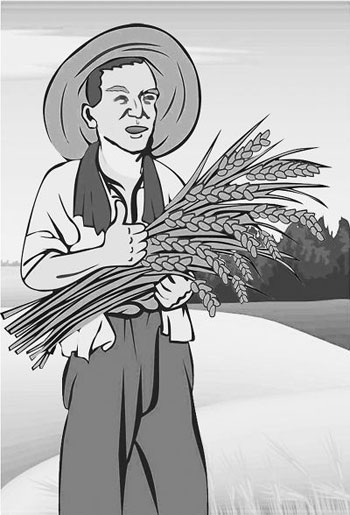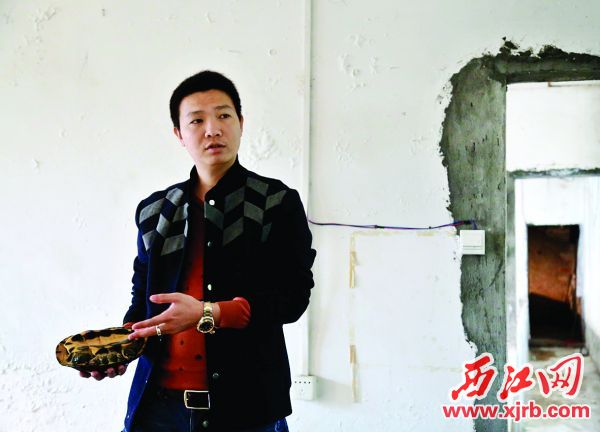Internet of things grafting Agriculture: a technological Revolution in the Field

With a small sensor, the vegetables in the greenhouse can talk. The humidity is low, the temperature is high, and you are short of nitrogen, phosphorus and potassium. No matter where you are, click your mouse or mobile phone. The greenhouse thousands of miles away can automatically water and fertilize melons and vegetables. Swiping the QR code, vegetables and fruits know all about the "past life" from the greenhouse to the dining table. This is not an imaginary scene, but what is happening at the Longteng vegetable growing Cooperative in Texas.
The research on this technology is the Institute of Science and Technology Information of Shandong Academy of Agricultural Sciences. By grafting the Internet of things into agriculture, they are changing the traditional mode of agricultural production in the fields and allowing people to enjoy safer agricultural products on the tip of their tongues. "using the Internet of things data system, real-time detection of physical parameters in the crop production environment, such as temperature, humidity, pH value, light, soil nutrients, carbon dioxide concentration, remote monitoring and precise implementation of policies, not only saves resources and labor, but also improves product quality and economic benefits." The project being built by the Ruan Huaijun team, director of the institute, has made the above scenario a reality, but that is not all.
Lao Wu's new weapon
After raising kelp for half his life, the habit of Lao Wu, a technician at Weihai Changqing Marine Technology Company, has been changed by the Internet of things.
Kelp seedlings grown in low temperature seawater are sensitive to sunlight, and light intensity has become one of the key factors determining the yield and quality of kelp seedlings. Over the years, Lao Wu has followed the traditional way of light intensity monitoring, mainly based on his own sensory experience, supplemented by hand-held light instruments for on-site measurement. Every day, he and his colleagues will drill into the kelp seedling workshop from time to time to monitor the light intensity, even if they have experience, due to problems such as inaccurate judgment, untimely measurement, incomplete monitoring points, and so on, there are also accidents that lead to kelp seedling burning or poor growth.
The turning point came in 2013. In this year, the Institute of Science and Technology Information of Shandong Academy of Agricultural Sciences designed a solution of kelp nursery Internet of things system.
Now, Lao Wu only needs to turn on the computer in the office, or through the big screen on the wall, he can grasp the real-time changes of daily light intensity in the seedling workshop. Even if you are on a business trip, you can keep abreast of the latest data changes through the mobile client, and you can view live videos. When the light is abnormal, the system automatically alarms and reminds the nursery staff to take measures in time.
"the Internet of things is a good thing." Lao Wu, who is stubborn, is really convinced. As a matter of fact, it is not only Lao Wu who will benefit. At the Longteng vegetable growing Cooperative in Texas, staff only need to sit in front of the computer to easily manage the planting of vegetables in the greenhouse. "nearly ten parameters such as air humidity and soil temperature in the greenhouse can be measured comprehensively, and these indicators can also be controlled." Person in charge Huo Chunliang said that through the Internet of things, a person can monitor and manage thousands of mu of land in real time at the same time.
The Internet of things is all-inclusive, and research and development is "all-inclusive".
Whether it is Lao Wu's new weapon or Huo Chunliang's "mouse planting", these are not enough to constitute the whole beauty of the project "Research and Construction of Integrated Technical support system for Agricultural production based on the Internet of things".
In the planning of project director Ruan Huaijun, this Internet project revolves around advantageous industries such as fruits and vegetables, livestock and poultry, and aquatic products. Key technologies such as the Internet of things, cloud computing, big data and mobile Internet will be integrated and applied to "promote the transformation and upgrading of superior agricultural industries, and achieve intelligent production, information management, product transparency and efficiency maximization."
As a result, the project includes not only physical measurement and control equipment, remote video, but also virtual APP, remote roaming and agricultural Internet of things systems such as "Zhi Nong Yun platform", "Zhi Nong Wechat platform" and "Zhi Nong traceability platform".
However, the Internet of things is all-inclusive, even for a specific industry, it is necessary to design and develop different devices, and connect devices with different standards. It is not easy to develop these. In terms of measurement and control equipment alone, in order to enable the "invisible hand" to control crops and aquatic products, Ruan Huaijun's research team needs to develop sensor acquisition nodes, transmission equipment and control equipment. It is also set up in the production site and used in the field to intelligently collect and monitor all kinds of agricultural production information, such as farmland soil, crop growth, disease and pest disasters and near-surface meteorology, and transmit the data to the central platform in real time through GPRS, 3G, WiFi and wired network, so as to realize omni-directional and multi-angle perception of agricultural prenatal, mid-production and post-natal information. Provide reliable sources of information for agricultural production, operation, management, decision-making and services.
What makes the director not worried is that the "brain" composed of doctoral and master's teams of software and hardware from different fields can develop the necessary equipment at any time according to the progress of the project.
China's first customized e-commerce platform for leisure agriculture
In recent years, among urban white-collar workers, the phenomena of "planting", "claiming" and "keeping" of agricultural products such as vegetables, fruits, livestock and poultry have been on the rise. After analysis, Ruan Huaijun's team believes that the pain point behind it is still the issue of agricultural safety. Therefore, the team designed a set of customized leisure agriculture e-commerce platform based on the Internet of things, whose core concept is "private", "enjoy" and "+".
"Private represents autonomy, exclusivity and on-demand customization; 'enjoyment' represents a green, healthy and happy experience; and'+ 'represents integration, unlimited and value-added services. Relying on the 'private +' platform, we can achieve the effect of 'small amount of vas deferens, controllable and credible, quality for quantity, combination of entertainment'. The application of the Internet of things makes the WYSIWYG production of agricultural products a reality. The 'private +' platform is actually a reconstruction and reconstruction of the traditional agricultural industrial chain and value chain, which is also a typical application of 'Internet + Agriculture'. " Ruan Huaijun said.
In Jinan Jiahe Tea Co., Ltd., Shandong Innovation Source Agricultural Technology Development Co., Ltd., Shandong Young Eagle Ecological Agriculture Co., Ltd., leisure agriculture operation templates such as "private tea garden", "private vegetable garden", "private orchard" and "private scattered chicken raising" are being built, which is the landing of the concept of "private plus".
"our goal is to achieve four '100%' guarantees of the 'private plus' platform: 100% self-customized cultivation, 100% ownership of agricultural products, 100% traceability of agricultural products, and 100% green health of agricultural products." Ruan Huaijun said.
- Prev

What will be the changes in agricultural subsidies next year?
What will be the changes in agricultural subsidies next year?
- Next

Wu Guozheng, a returnee, went back to his hometown to set up a farm to raise turtles and eventually became rich.
Wu Guozheng, a returnee, went back to his hometown to set up a farm to raise turtles and eventually became rich.
Related
- A course of planting techniques and methods on how to grow carrots
- How to plant the latest tulips?
- Is it better to pick tea in the morning or in the afternoon? When is the best time for tea to be picked? what is the third or fifth tea?
- Launch Yuanxiao Happy combination Haocha + Tea Yuan healthy Taste
- Penghu Tourism "Fireworks 20 Parade with You"
- 2022 West Lake Happiness holds "Digital Revitalization Voucher" and draws iphone13 and laptop.
- Banqiao Fuzhou social houses are designed to change start-up combined with police elimination to create a safe and livable environment
- The convenient measure of "mechanical weeding" in Xinbei has been abused and the Agriculture Bureau has imposed heavy penalties on the illegal land consolidation.
- Changgeng University Joins Hands with Four Memory Factories to Rescue Memory Talent Shortage
- The list of Taiwan's top 100 MVP managers is listed by the Director-General of the Farmers' Association of Sanxia District.

